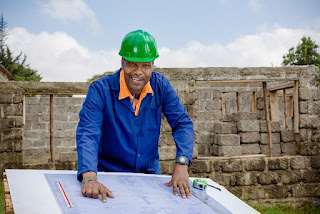Difference between Commercial and Industrial Construction
1. Purpose
and Functionality – Tailoring Spaces for Diverse Operations
One fundamental difference between commercial and industrial construction lies in the purpose and functionality of the spaces created. Commercial construction primarily focuses on establishments that engage in business activities and cater to the general public. This includes retail stores, office buildings, restaurants, and entertainment venues. The design and layout of commercial spaces prioritize customer experience, branding, and creating environments conducive to commerce.
On the other hand, industrial construction caters to facilities involved in manufacturing, production, and large-scale operations. Industrial spaces are designed with a focus on efficiency, workflow optimization, and accommodating heavy machinery. Factories, warehouses, and manufacturing plants fall under the realm of industrial construction. The functional requirements of industrial spaces often involve specialized infrastructure to support specific manufacturing processes, storage needs, and logistical operations.
2. Building Design and Aesthetics – Reflecting Brand Identity vs. Operational Efficiency
Commercial construction places a strong emphasis on building design and aesthetics to create visually appealing and welcoming spaces. The exterior and interior designs of commercial buildings are often crafted to reflect the brand identity of the businesses they house. Attention is given to architectural details, storefronts, and interior layouts that enhance the overall customer experience. The goal is to create an inviting atmosphere that aligns with the brand's image and attracts customers.
In contrast, industrial construction prioritizes operational efficiency and practicality over aesthetic considerations. The design of industrial buildings is driven by the need to accommodate machinery, storage systems, and large-scale production processes. Functionality takes precedence, and the focus is on creating spaces that support the smooth flow of manufacturing or logistical operations. Aesthetics in industrial construction often serve a utilitarian purpose, ensuring the practicality of the workspace.
3. Zoning and Regulatory Considerations – Navigating Different Frameworks
Zoning and regulatory considerations vary significantly between commercial and industrial construction projects. Commercial spaces are typically subject to specific zoning regulations that define permissible uses in commercial zones. These regulations often address issues such as parking requirements, building heights, and setbacks. Commercial construction projects need to navigate these regulations to ensure compliance with local zoning ordinances.
In industrial construction, zoning considerations may involve adherence to regulations related to noise levels, environmental impact, and safety standards. Industrial facilities often need to comply with specific regulations governing hazardous materials, emissions, and waste disposal. The complexity of these regulations necessitates a thorough understanding of industrial zoning requirements. Land development consultants play a crucial role in guiding both commercial and industrial construction projects through the intricacies of zoning and regulatory frameworks.
4. Construction Materials and Techniques – Tailoring to Different Needs
The choice of construction materials and techniques differs between commercial and industrial construction, aligning with the distinct needs of each sector. Commercial buildings often showcase a diverse range of architectural styles and utilize materials that enhance visual appeal. Common construction materials in commercial projects include steel, glass, and concrete, while architectural elements such as facades and finishes contribute to the overall aesthetic.
Industrial construction, on the other hand, often relies on durable and robust materials that withstand the demands of heavy machinery and industrial processes. Structural steel, reinforced concrete, and metal cladding are common in industrial building construction. The emphasis is on building materials that ensure the longevity and resilience of the structure, meeting the unique challenges posed by industrial operations.
5. Interior Design and Space Utilization – Customer-Centric vs. Operation-Centric
The interior design of commercial spaces revolves around creating inviting environments for customers and employees alike. Best interior design company in Toronto specializing in commercial projects focus on maximizing space utilization to enhance the functionality and aesthetics of retail stores, offices, and hospitality venues. Interior layouts are carefully planned to create visually appealing spaces that optimize the customer experience and support business operations.
In industrial construction, interior design is centered around optimizing the operational efficiency of the space. The layout is tailored to accommodate manufacturing processes, machinery placement, and logistical operations. Industrial interior design prioritizes workflow, safety considerations, and the strategic organization of equipment and storage areas. The goal is to create an operation-centric environment that facilitates the smooth execution of industrial processes.
6. Land Development Requirements – Tailoring to Project Scope
Land development requirements vary based on the scope and purpose of commercial and industrial construction projects. Commercial developments often involve considerations such as parking space allocation, landscaping, and access points to accommodate customer traffic. The design of commercial properties may also involve aesthetic elements that contribute to the overall appeal of the area.
Industrial construction projects, on the other hand, may have specific land development requirements related to heavy-duty infrastructure, loading docks, and storage yards. Access for large trucks, utility infrastructure to support industrial processes, and compliance with environmental standards are crucial aspects of land development for industrial facilities. Land development consultants near you play a pivotal role in navigating the unique requirements of each type of construction project.
7. Project Scale and Complexity – Small-Scale vs. Large-Scale Operations
Commercial and industrial construction projects often differ in scale and complexity. Commercial construction projects can range from small-scale developments, such as boutique shops, to large-scale complexes, such as shopping malls or high-rise office buildings. The complexity of commercial projects may involve intricate architectural designs, extensive interior fit-outs, and attention to detail in creating visually engaging spaces.
Industrial construction projects, by nature, tend to be larger in scale and may involve more complex logistical considerations. The construction of manufacturing plants, distribution centers, or industrial complexes requires meticulous planning to accommodate specialized machinery, large production areas, and the integration of heavy infrastructure. The scale of industrial projects often necessitates a comprehensive approach to project management and coordination.
8. Economic Impact and Community Engagement – Local Commerce vs. Industrial Contribution
The economic impact and community engagement associated with commercial and industrial construction projects differ in their focus and contributions. Commercial developments, such as retail centers and office buildings, contribute to local commerce by attracting businesses, creating job opportunities, and enhancing the overall vitality of the community. These projects often involve a level of community engagement aimed at aligning with local aesthetics and meeting the needs of the surrounding population.
Industrial construction projects contribute to the local economy by providing employment opportunities and supporting industrial activities that may have a regional or national impact. While community engagement is still relevant in industrial projects, the emphasis is often on ensuring compliance with environmental regulations and addressing concerns related to noise, traffic, and other potential impacts on the community. Land development consultants can play a role in facilitating positive community engagement for both commercial and industrial projects.





I really appreciate your this post, its nice blog. thanks to post this blog. Boost your construction projects by hiring top-tier professionals. With Paperub, easily find and collaborate with skilled construction management freelancers. Streamline processes, meet deadlines, and ensure success. Choose expertise and reliability—Hire Construction Management Freelancer now on Paperub for exceptional project outcomes!
ReplyDelete